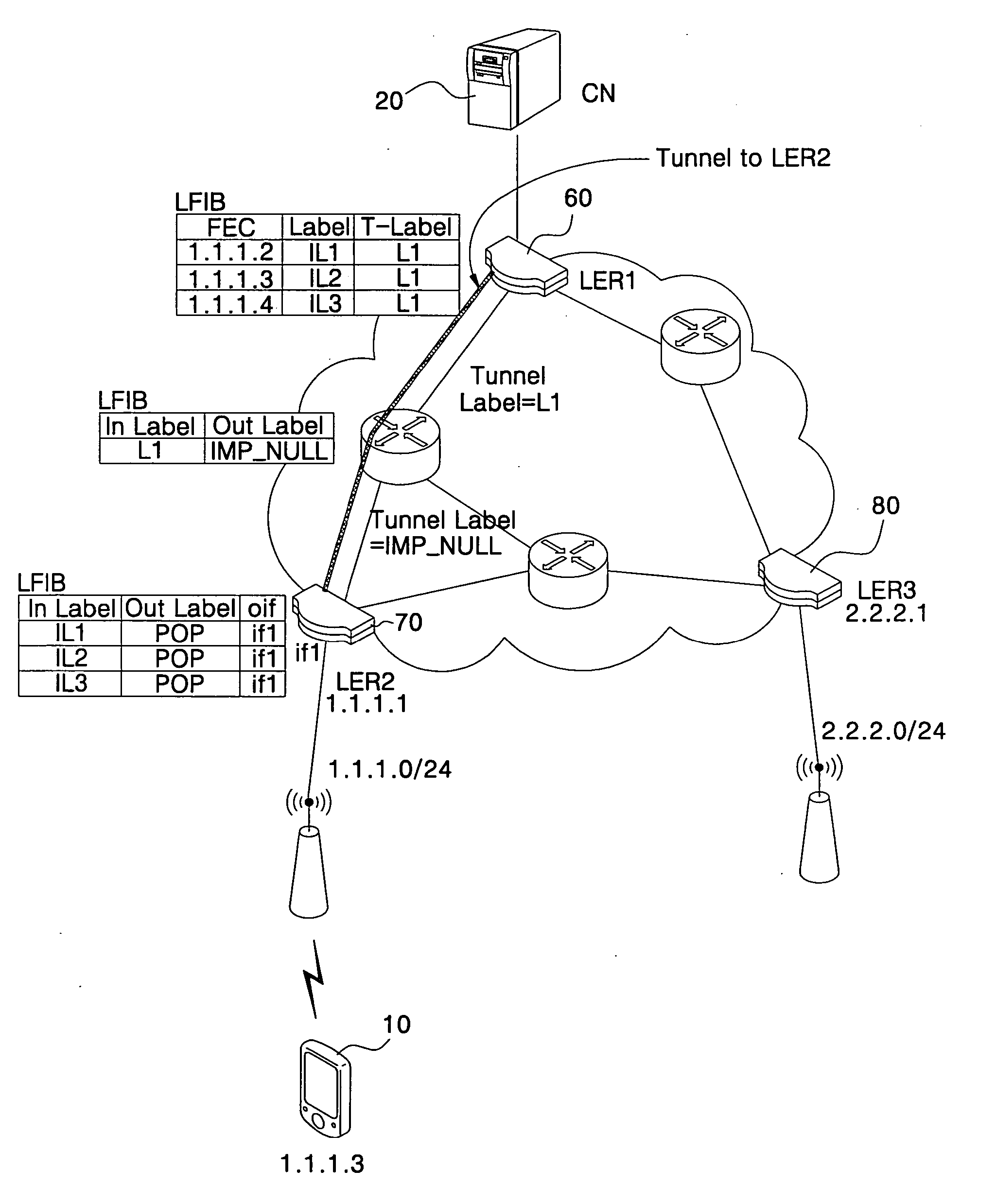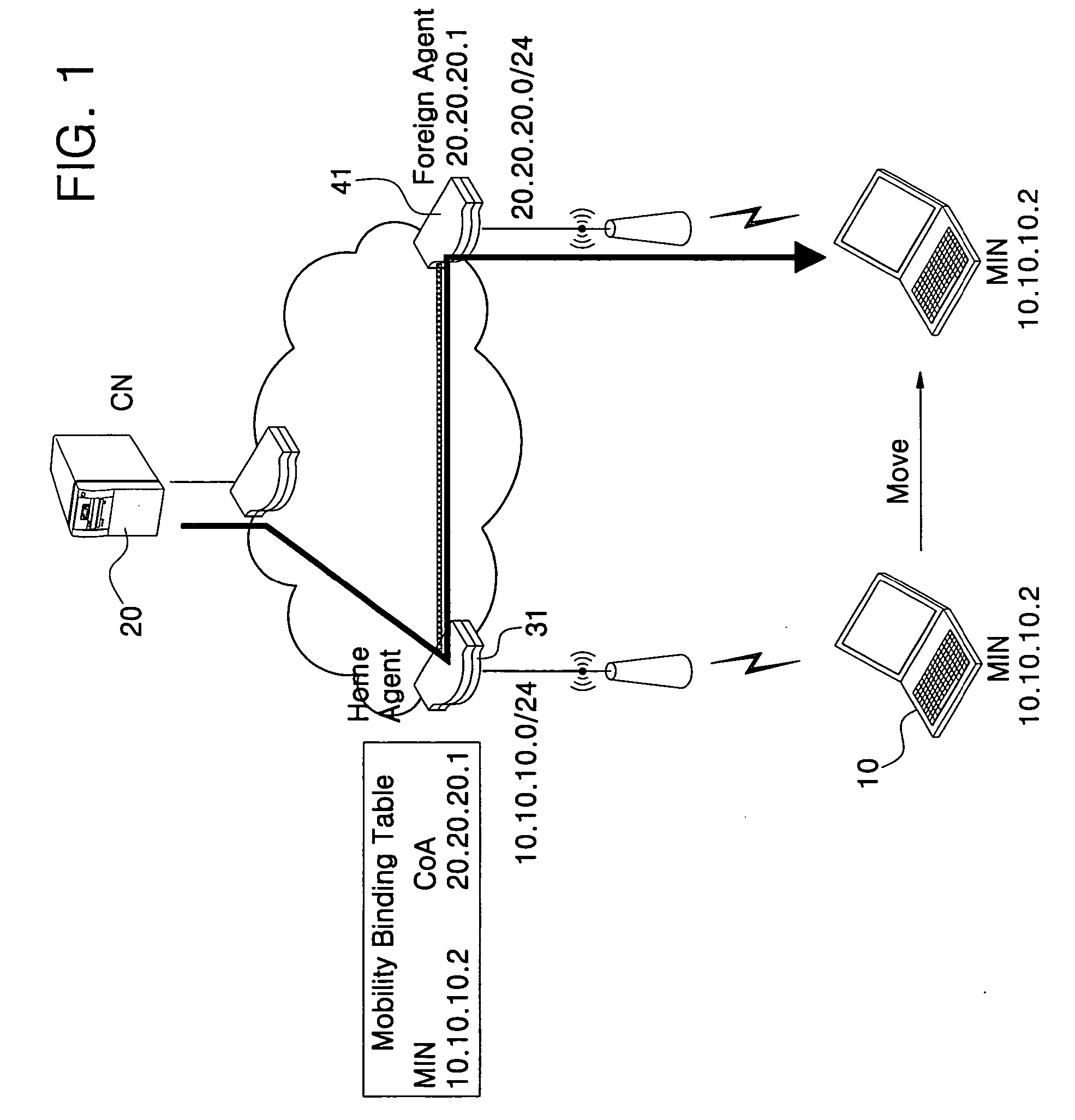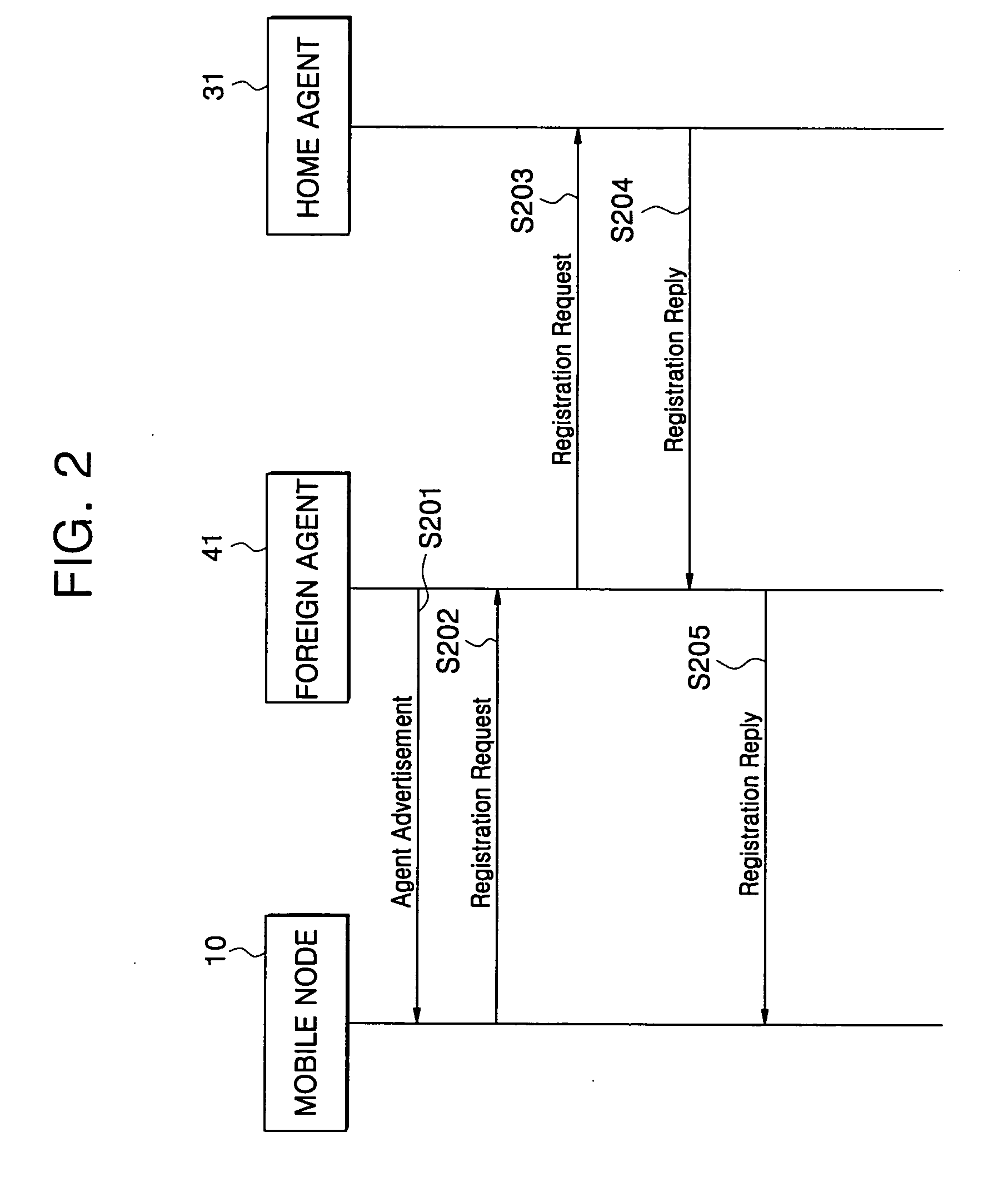Multi-protocol label switching (MPLS) network and method of applying a mobile Internet protocol (IP) to MPLS network
a multi-protocol label switching and network technology, applied in data switching networks, wireless network protocols, digital transmission, etc., can solve problems such as increased packet forwarding time, inefficient traffic processing, and drawbacks in extension
- Summary
- Abstract
- Description
- Claims
- Application Information
AI Technical Summary
Problems solved by technology
Method used
Image
Examples
Embodiment Construction
[0059]FIG. 1 is an example of a wireless network using mobile Internet Protocol (IP). The wireless network of FIG. 1 includes a Mobile Node (MN) 10, a Correspondent Node (CN) 20, a Home Agent (HA) 31, and a Foreign Agent (FA) 41.
[0060] The MN 10 is a host, which moves by changing an accessed network, and the CN 20 is for communicating with the MN. The HA 30 accesses a home network of the MN 10, and the FA 40 is connected to a network to which the MN 10 is currently accessing outside of the home network.
[0061] In FIG. 1, an HA assigned to the MN is 10.10.10.2, and a Care-of-Address (CoA) is 20.20.20.1 which is identical to an IP address of the FA 41. In FIG. 1, the MN 10 is moving from an area of the HA 31 to an area of the FA 41. The HA 31 registers and manages the home address and the CoA of the MN 10 in a format of the mobility binding table.
[0062] In communication of the MN 10 with the CN 20, the CN 20, aware of the home address of the MN 10, encapsulates data to be transmitte...
PUM
 Login to View More
Login to View More Abstract
Description
Claims
Application Information
 Login to View More
Login to View More - R&D
- Intellectual Property
- Life Sciences
- Materials
- Tech Scout
- Unparalleled Data Quality
- Higher Quality Content
- 60% Fewer Hallucinations
Browse by: Latest US Patents, China's latest patents, Technical Efficacy Thesaurus, Application Domain, Technology Topic, Popular Technical Reports.
© 2025 PatSnap. All rights reserved.Legal|Privacy policy|Modern Slavery Act Transparency Statement|Sitemap|About US| Contact US: help@patsnap.com



